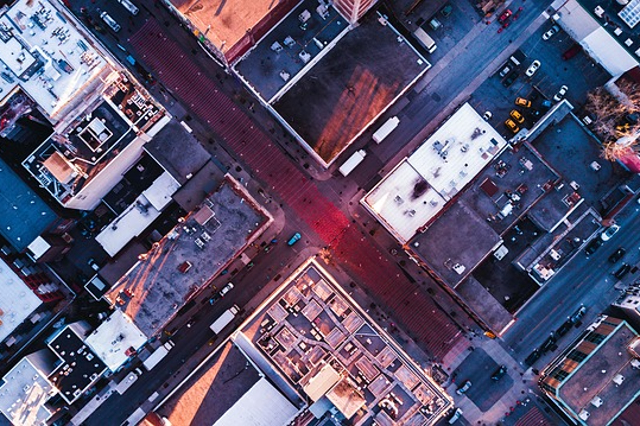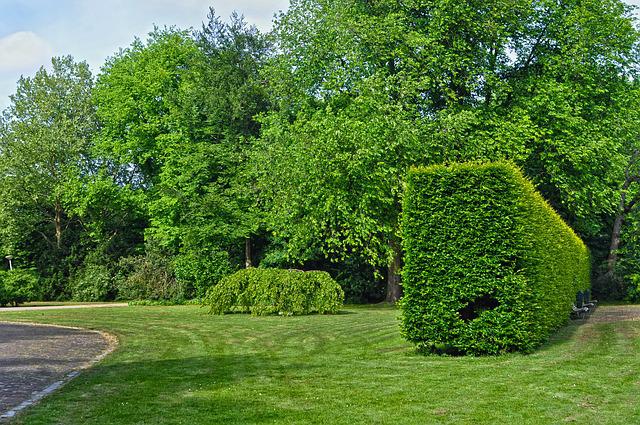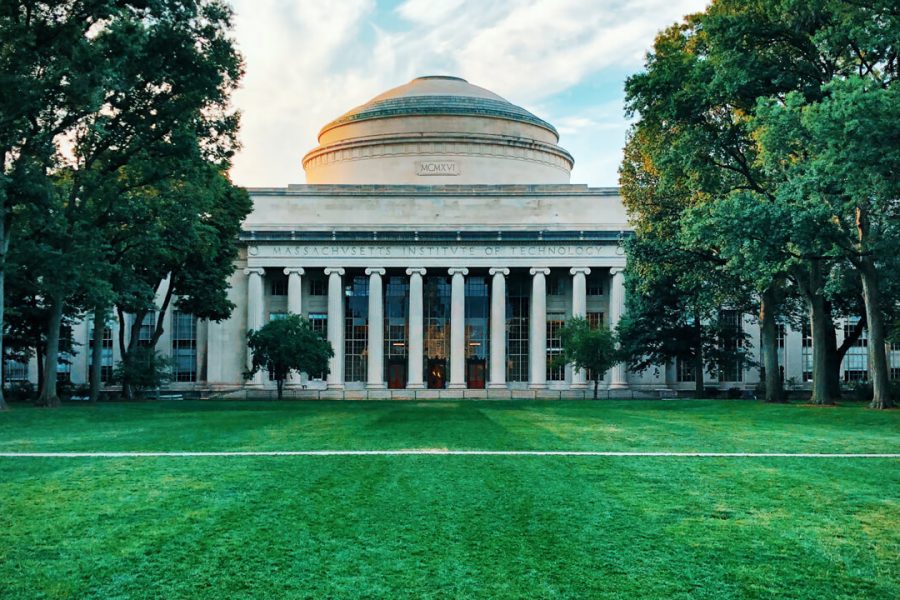Urban heat islands (UHIs) are areas with significantly higher temperatures than their surrounding regions. Heat retention and generation in the city core contributes to climate change and worsens air quality for people living in and near heat islands. They also have a negative impact on precipitation downwind of the UHI. UHIs are also the leading cause of weather-related deaths in the United States. Cities with inadequate nighttime cooling experience an increase in heat-related deaths during periods of hot weather, most of which are with UHI .
The reasons are many, but fortunately there are solutions to combat their negative impact on the population and the environment. Some of these solutions are doubly attractive because they simultaneously address other urban issues, such as quality of life and the elimination of food deserts. They help make cities more attractive and livable for both residents and visitors. Here are ten ways to mitigate the harmful effects of UHI and create better cities for present and future generations.
10. Creation of additional pocket parks

The conversion of abandoned or derelict urban properties into small parks, called pocket parks by urban planners and architects, has proven effective in combating the problem of heat islands. After World War II, Athens, Greece, experienced a housing boom in which a number of apartment buildings replaced single-family homes with the surrounding greenery. Beginning in the late 1990s, Athens has begun implementing projects to create pocket parks on small abandoned sites, in alleys and stables. Roads intended for cars have also been converted into green spaces with paths for pedestrians and cars. The expansion of greenery helps to cool the city and also improve air quality.
Other cities have seen the value of pocket parks, including their contribution to quality of life by offering convenient opportunities to relieve urban stress. There are dozens in Chicago There are many such small parks, and there are plans for more. Mexico City built about 3.5 acres of small pocket parks scattered throughout the city, including in abandoned spaces under bridges and overpasses. Paris is known for its wide boulevards and open spaces, but it has also embraced pocket parks as part of long-term urban planning.
Pocket parks are not a solution to UHI in themselves, but they can and do contribute to reducing heat retention in city centres. At the same time, they offer small oases of calm and relaxation without leaving the urban area. Their use has implications for urban planners both in terms of quality of life and in terms of attempts to create less heat-retaining city centres. Whether it is a large international city or a medium-sized city, they are an effective tool against UHI.
9. Create roofs that reflect rather than absorb heat.

Dark colors absorb heat, while light colors reflect it. So it makes sense that dark colored roofs absorb heat during the day and release it during the relatively cooler hours of the night. The slowly released heat remains, for the most part, in a bubble above the area, the UGI image. On a day when the ambient air temperature is 90 degrees, the temperature of a dark, heat-absorbing roof can exceed 190 degrees . The dense concentration of such roofs traps a lot of heat, which contributes significantly to the increase in UHI temperatures compared to the surrounding rural areas.
Reflective roofs are an obvious solution to the heat retention problem. And, like pocket parks, they offer other benefits. They can reduce the internal temperature of a building, reducing the need for air conditioning. Absorbed heat damages roofs; reflected heat reduces roof wear and helps extend the life of the roof. Thus, cool roofs benefit society and the owners and occupants of the buildings on which they are installed.
Beginning in 2012, volunteers in New York City began painting dark roofs white in an attempt to reduce heat retention in the city. As of 2018, they had painted nearly 7 million square feet of previously dark asphalt roofs, a lot of paint and a lot of time were spent. Even with this effort, 99% of the city's roofs remained untreated, indicating the severity of the problem.
8. Create rooftop gardens and farms

Painting roofs white or covering them with reflective coatings isn't the only way to make a roof cooler. There's a lot of empty space there. Using it as a growing greens reduces heat absorption, improves air quality and has another benefit. Greenery in the form of fruits and vegetables can offer fresh, local produce in the city centre. This is not a far-fetched idea or a vision of the distant future. In a growing number of cities urban rooftop gardening and commercial farms are becoming a reality.
In Montreal A grocer has turned its 25,000-square-foot rooftop into a farm that grows tomatoes, herbs, beets, lettuce and other vegetables. Grown in soil and irrigated by the store's dehumidification system, the rooftop farm's produce is packaged and sold in the store below. In Tel Aviv, Israel, Dizengoff Center, large shopping mall, the flat roof supports two huge greenhouses where vegetables are grown hydroponically. During the growing season, it produces about 10,000 heads of cabbage of lettuce a month for sale to customers outside the mall. He also grows a variety of other vegetables and, as in Montreal, provides a cooler roof for the buildings below.
Eagle Street Rooftop Farm is located above a three-story warehouse across the East River from Manhattan in Brooklyn. Its 6,000 square feet of growing space supplies produce for sale at its own farmers market, as well as to restaurants in the area. Like the Montreal and Tel Aviv operations, it also has beehives for harvesting fresh honey. UHI’s cooling by growing fresh produce on its rooftops is a simple and easily achievable way to reduce urban heat, improve air quality, and provide access to fresh, locally grown fruits and vegetables.
7. Lighter road surfaces on streets and parking lots.

Anyone who has walked across a paved parking lot on a hot sunny day can attest to the fact that dark sidewalks absorb a lot of heat. Sidewalks are an integral part of any city, where cars and pedestrians move. A report from the U.S. Environmental Protection Agency states that from 35 to 40% of the average city's urban area is covered by pavement, making it a major source of UHI. Cooler pavements are more difficult to achieve because they cannot be covered with greenery. Other factors such as driver and pedestrian safety, visibility, and durability of the pavement must also be considered.
Existing types of pavement can be treated with materials such as coatings to increase the amount of light reflected rather than absorbed. Other types have been studied for their suitability for future street, road and parking lot renovations. One of these is permeable road surface, which has a higher density, allowing for greater convection during the day and reducing the amount of heat that accumulates in the pavement for later release. It also allows for better water absorption, reducing stormwater runoff during heavy rainfall. Lighter pavements also reduce the need for candle power in street lighting.
Cool pavements can reduce heat retention, resulting in lower UHI temperatures, and improve visibility for drivers at night. There are concerns about cost. Replacing or modifying existing pavements in cities is a very complex proposition, and its implementation affects traffic patterns, travel times, and other complexities of urban life. But the potential benefits that can be achieved may well outweigh the costs if take into account general adverse effects of UHI .
6. Create better blue spaces in urban areas

Blue spaces are water within the city, whether it's flowing streams, lakes and ponds, or fountains and pools. Properly designed and maintained, they reduce heat islands. Improperly designed or maintained, they may worsen the situation . Water cools mainly through evaporation at the surface. But it also absorbs heat: the temperature of standing water rises during the day as sunlight warms the surface.
Artificial blue spaces, such as pump-powered fountains, can actually enhance the heat-saving effect, as the pumps create friction when they operate. They also contribute to energy consumption, another source of heat retention. The cooling effect of blue spaces in cities is enhanced when it fits together using greenery, which essentially creates an island within an island, or a cool space surrounded by a larger UHI. More of these islands reduces the overall amount of heat retained by the UHI.
More blue spaces in urban areas have been shown to provide benefits other than reducing temperatures. It has been proven that life near blue spaces reduces stress, improves physical activity and reduces obesity levels, which are significant benefits. Of course, to take full advantage of natural blue spaces like rivers, centuries-old runoff into water needs to be cleaned up in many urban areas.
5. Plant more shade trees in urban areas.

The larger the shade canopy, the less sunlight reaches the heat-retaining surfaces of the city. This applies not only to sidewalks and roofs, but also to the exterior walls of brick, stone and concrete buildings, as well as the interiors of glass-walled buildings. Shade trees can also protect large areas of blue space, and the combination of increased blue and green space is one of the most effective ways to reduce heat retention during the day.
Urban parks and forests offer other benefits, too. Both quality of life and air quality are improved by large, shaded forested areas in cities. A 2014 study by the Georgia Institute of Technology found that Louisville, Kentucky, was one of the fastest-growing UHIs in the United States. It also found that a major cause of increased heat was the lack of shade trees in many areas of the city, including the downtown area. The connection between shade trees and heat retention is clear. More trees = cooler city.
Cities typically lose trees for a variety of reasons, including pests, tree blight, new construction, and natural disasters like thunderstorms and winter storms. A Georgia Tech study found that planting more trees and increasing shade canopy cover is the single most effective method for reducing heat buildup and the resulting UHIs. Simply put, trees and shade provide natural protection from potentially harmful sun rays and the heat they generate.
4. Vertical gardens improve air quality and reduce heat retention.

Vertical gardens are becoming increasingly popular in cities around the world, both for their aesthetic value and their economical impact on heat retention.In Singapore The 18 towers built for this purpose are covered in growing plants and lit by solar panels. The result is a dramatic display of vegetation that helps cool the city while also being a major tourist attraction. In Mexico City officials have taken a more practical approach. The columns supporting the bridges and overpasses are lined with felt, through which plants grow, watered by its own rainwater collection system.
In Paris, the facade surrounding the entrance to Museum on the Quai Branly, covered with more than 15,000 plants that cover its vertical walls, framing the entrance with greenery. The Athenaeum Hotel in London has seven floors of plants climbing up the building's outer vertical corner. The vertical gardens, in addition to the spectacular arrangement of plants, cool the air, improve its quality, and also protect the structure on which they are grown from absorbing heat during sunny hours.
Beirut, Like other communities in Lebanon, it has also turned to vertical gardens to address UHI, air quality and landscaping issues. Vertical gardens are part of the solution to all three problems, but only when combined with other mitigation efforts. They also help reduce urban noise for residents, and plants act as a natural filter for rainwater. They can also be used to herbal production and other edible plants, although at the time of this writing they have not yet gained popularity in the United States.
3. Reduce traffic congestion

Automobile and freight transport are the main contributors to UHI. Reducing their use has clear benefits for cities, reducing both the severity of UHI and air pollutants. Lighter cars also absorb less heat. Dark-colored cars in bumper-to-bumper traffic clearly negate the benefits of lighter sidewalks.
But any attempt to reduce car use is immediately controversial, especially in the United States, where large cities have traditionally sit in traffic jams much longer working hours, and any government agency's decision to abolish dark paint jobs on cars would be met with howls of protest at the infringement on personal freedom. Reducing car use would immediately lower the UHI temperature, but it is unlikely to happen anytime soon.
It is a scientific fact that vehicle emissions contribute to both air pollution and UHI, and in hot weather conditions this contribution increases. Therefore, it is desirable to reduce traffic congestion if one wants to reduce the impact of UHI. There are other ways to reduce congestion without limiting the number of vehicles on the road. In the UK These methods are being studied and in some cases implemented.
2. Create cooler stormwater runoff to improve water quality.

Stormwater runoff from hot roofs and sidewalks has been shown to increase temperature of streams and lakes. Rising temperatures have a negative impact on aquatic life, both plant and animal. The result is unhealthy water that becomes lifeless and loses much of its ability to cool and filter. Deterioration in water quality is another result of UHI that affects the lives of people living in urban areas as well as those living downstream.
One of the solutions is the creation of bioswales, constructed depressions in landscape features that can temporarily hold water, allowing it to cool before releasing it into streams. Permeable pavements that cool the surface of urban areas also absorb and disperse more water, rather than releasing it into storm drains. All of the mitigation efforts listed so far have a positive impact on cooling stormwater runoff, which will benefit streams and lakes.
As water flows downstream in rivers, the impact of UHI on water quality extends beyond the urban area, affecting aquatic biodiversity far from the heat source. The adverse impact of UHI on water quality is a major driver of urban cooling.
1. More efficient air conditioning can reduce UHI.

An air conditioner cools interior spaces by absorbing heat that is released into the outside air. Cooling interiors heats the city in which the interiors are located. In essence, the heat (and humidity) inside the building is released to the outside. In a densely populated area on a hot day, a huge amount of heat is added to the air outside, creating a dome that captures sunlight, creating heat .
However, air conditioning and refrigeration are facts of modern life. More efficient methods of cooling the air in buildings and vehicles will go a long way in mitigating the effects of UHI. They are being conducted research on more efficient air conditioning . If and when this is achieved, it will be just one of several weapons that future generations will use to combat the dangers of UHI.
None of the strategies on this list will eliminate UHI alone. But in different combinations, depending on local policies, community engagement, and environmental factors, combinations of several factors can have a mitigating effect on UHI, making cities more livable and therefore more livable around the world.













Оставить Комментарий